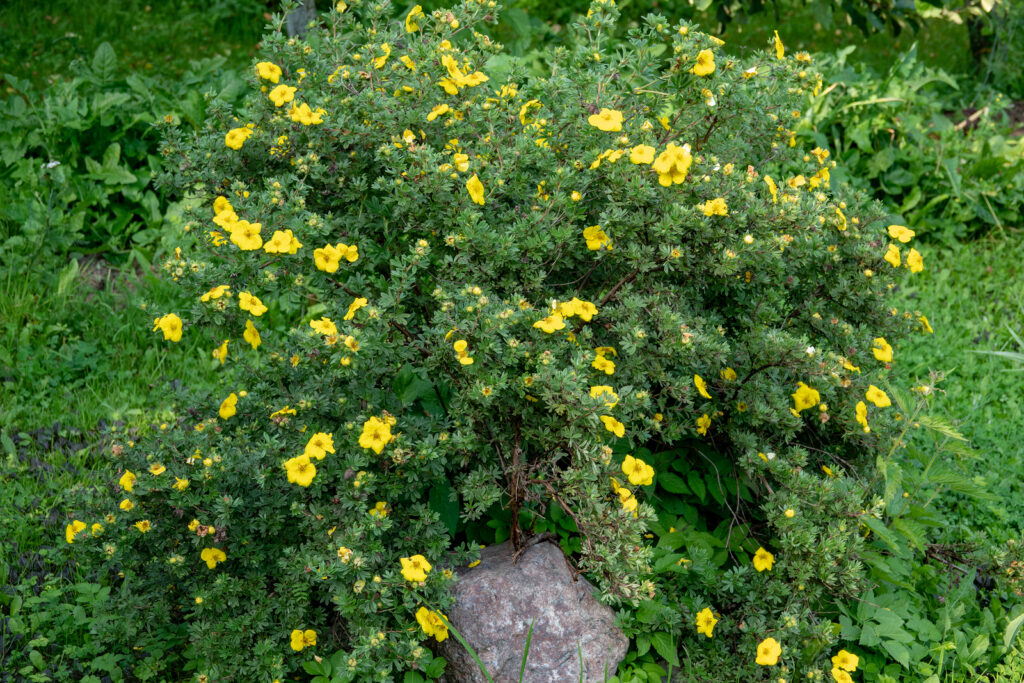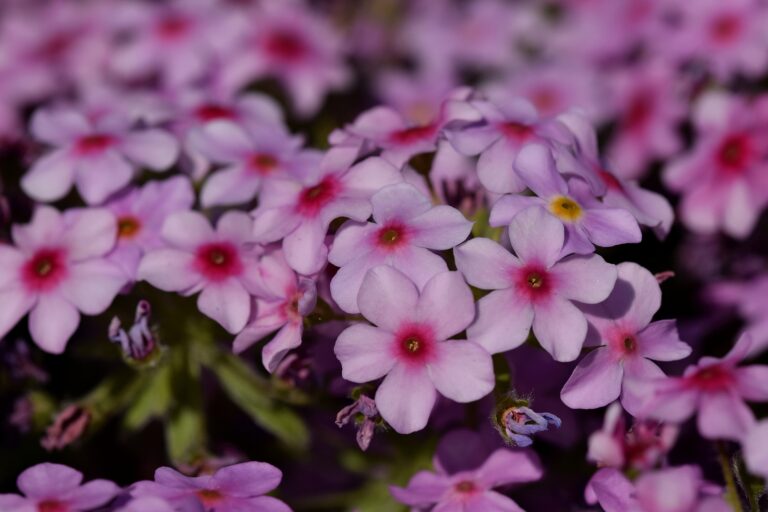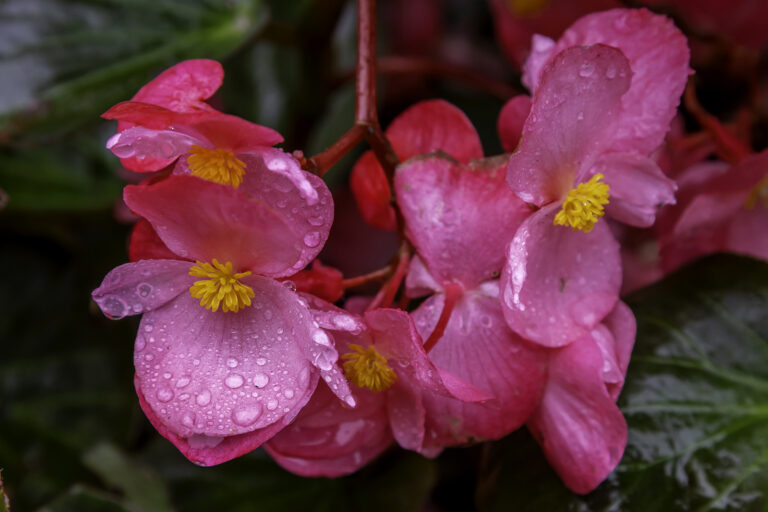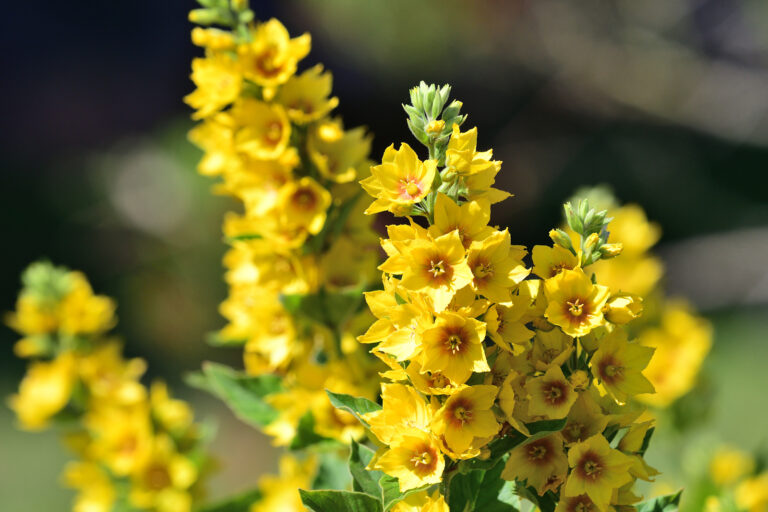How to Grow Cinquefoil – Potentilla
Potentilla, also known as cinquefoil, is a genus of hardy perennial and shrub plants that can thrive in various growing conditions. The genus contains about 500 species. All bear five-petaled, cup- or saucer-shaped flowers in shades of yellow, orange, red, pink, or white.
Potentilla species vary in size and habit; some grow as low-growing ground covers while others can be shrubs or even small trees. The leaves are usually palmate with toothed edges and are often green or grey-green in color. Potentilla are popular in gardens and landscaping. They are often used in borders, rock gardens, and as ground cover. Their attractive flowers and ability to tolerate a wide range of growing conditions make them a good choice for low-maintenace and drought-tolerant gardens.
Potentilla are found in temperate regions throughout the Northern Hemisphere.

Get to know Potentilla
- Plant type: Perennials, deciduous shrubs
- Growing zones and range: Zones 2 to 8 depending on the species
- Hardiness: Hardiness varies with species
- Height and width: Low-growing to small trees depending on the species
- Foliage: Palmate leaves with toothed edges and are often green or grey-green in color
- Flowers: Five-petaled, cup- or saucer-shaped flowers in shades of yellow, orange, red, pink, or white
- Bloom time: Spring or early summer to fall
- Uses: Depending on species use as a ground cover, decorative shrub or small tree
- Common name: Cinquefoil
- Botanical name: Potentilla
- Family name: Rosaceae
- Origin: Temperate regions of the Northern Hemisphere
Where to plant Potentilla
- Potentilla plants prefer full sun, but they can also tolerate partial shade. Make sure to plant them in a location where they will receive at least 6 hours of sunlight each day.
- Potentilla prefers well-draining soil with a pH of 6.0 to 7.5. If your soil is heavy or clay-like, consider adding compost or other organic matter to improve drainage.
When to plant Potentilla
- Plant potentilla in the spring after the last frost or in the fall.
Planting and spacing Potentilla
- Space Potentilla according to the species. Perennial Potentilla grow 18 to 24 inches tall and wide. Shrub species vary from 3 to 5 feet tall and wide.
- Dig a hole that is as deep and wide as the plant’s rootball. Place the plant in the hole and backfill with soil, making sure to gently pack the soil around the plant to remove air pockets.
How to water and feed Potentilla
- Water Potentilla regularly: Potentilla plants have shallow roots, so it is important to water them regularly, especially during hot, dry weather. Be sure to water at the base of the plant to avoid wetting the foliage, which can lead to disease.
- Potentilla is not a heavy feeder, so you only need to fertilize it lightly in the spring with a balanced fertilizer or compost.
Potentilla care
- Prune Potentilla plants in the early spring to remove dead or diseased branches and shape the plant as desired. Pruning will help promote healthy growth and flowering.
- To encourage bushier growth and more blooms, you can prune Potentilla in early spring before new growth begins.
- Mulch around the base of Potentilla plants to help retain moisture and suppress weeds. Avoid piling mulch directly against the plant stem to prevent rotting.
Potentilla pests and diseases
- Pests and diseases: Potentilla plants are relatively resistant to pests and diseases, but keep an eye out for common problems such as aphids, spider mites, and powdery mildew. Treat any infestations promptly to prevent further damage to the plant.
Potentilla propagation
- Divide mature Potentilla plants every few years to rejuvenate them and prevent overcrowding. Simply dig up the plant, separate the root ball into sections, and replant the divisions in a new location.

Potentilla varieties to grow
Perennials
- Potentilla atrosanguinea, Himalayan cinquefoil; sprawling, clumping plant grwo to 18 inche tall and 24 inches wide; furry siliver-gray leaves and eep red summer flowers.
- P. nepalensis, Nepal cinquefoil; grows 1 to 3 feet tall; bears clusters of dark red flowers.
- P. neumanniana: creeping 4-inch perennial forms dense mats to 12 inches wide; bears loose clusters of yellow flowers.
- P. recta ‘Warrenii’ grows to 2 feet tall and nearly as wide; bears bright yellow flowers.
Shrubs
- Potentilla fruticosa, shrubby cinquefoil: deciduous shrub grows to 4 feet tall or more; popular cultivars include ‘Abbotswood’ with large white flowers, ‘Coronation Triumph’ with yellow flower, ‘Daydown’ with yellow flowers flushed with pink, ‘Elizabeth’ with bright yellow flowers, ‘Frosty’ with large white flowers, ‘Goldfinger’ with large yellow flowers, ‘Goldstar’ with bright yellow flower’ ‘Katherine Dykes’ with pale yellow flowers, ‘Klondike’ with deep yellow floweres. ‘Pink Beauty’ with clear pink flowers, ‘Primrose Beauty’ with yellow flowers, ‘Red Ace’ with red flowers, ‘Sunset’ with yellow flowers tinged with oranage, and ‘Tangerine’ with medium yellow flowers.







